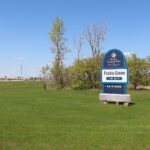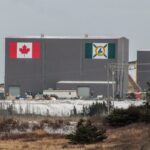Article contentNova Scotia’s biomass resourceArticle contentRushton said the biomass material is readily available across the province and there is no sense in letting it go to waste.Article content“We can use biomass to make wood pellets and biofuel for heating and clean electricity,” the minister said.Article contentThat has led to the push for wood-product heat in public buildings, Rushton said. Article content“We are about 20 public buildings now that have either been converted (to wood heat) or built from ground up,” Rushton said. “They are mostly schools and hospitals and we’re going to have a lot more.”Article contentAmong the 20 public buildings heated by wood products to date are the new French language elementary school in Wedgeport, near Yarmouth, Riverview and Memorial high schools in Cape Breton, a high school and elementary school in Yarmouth, East Hants Rural High, the Bridgewater provincial court, three buildings at Perennia Park in Bible Hill, NSCC schools in Lawrencetown and Bridgewater and the South Shore Regional and Valley Regional hospitals.Article contentArticle contentThe provincial government is updating design and procurement policies to prioritize the use of wood products in new buildings and renovations and it will soon launch a procurement process to secure partners to provide wood heat systems for more public buildings.Article content“We’ll keep that momentum going into the future,” Rushton said. “We can add more value to our lumber by making mass timber. It’s a lower carbon building material with plenty of strength for large businesses.”Article contentLooking aheadArticle contentProducts such as lumber and sawmill residuals have helped build homes and to generate power for years, said Ledwidge Lumber president Doug Ledwidge.Article content Ledwidge Lumber president Doug Ledwidge talks about wood and wood products for construction and heating at a news conference at the family-owned sawmill and planer mill in Enfield on Thursday, July 17, 2025. Francis CampbellArticle content“Now to the future,” he said. “Mass timber products such as glulam beams and cross-laminated panels will help build more environmentally friendly, natural buildings.Article content“The production of low-carbon fuels made from wood residuals and stem wood will assist Nova Scotia in moving to a less carbon-intensive environment and assist the forest sector that has suffered from the loss of markets for low-grade products.”Article contentArticle contentLedwidge said the Enfield mill in the next couple of years will add a biofuel plant to its yard to convert white wood byproducts, including shavings, sawdust and pulp chips into a liquid heating fuel to be used primarily in the industrial process. Article contentNatural momentum, not Northern Pulp reactionArticle contentRushton said the low-grade wood fibre initiative has been in a basket of government things to work on for some time and is not a response to the announcement this week from Northern Pulp that it would not be building a new kraft mill on the south shore of the province.Article content“This is actually in response to the economy and the forestry sector of Nova Scotia,” he said.Article contentTilley said there are no targets or timelines to transition a specific number or percentage of public buildings to wood-product heating.Article contentRushton said interest in mass timber production has in the past required material sourced from outside Nova Scotia, saying that will hopefully soon change with the development of the Mass Timber Company, to be headquartered in Elmsdale.
Local wood for building and burning a big part of Nova Scotia’s sustainability strategy










